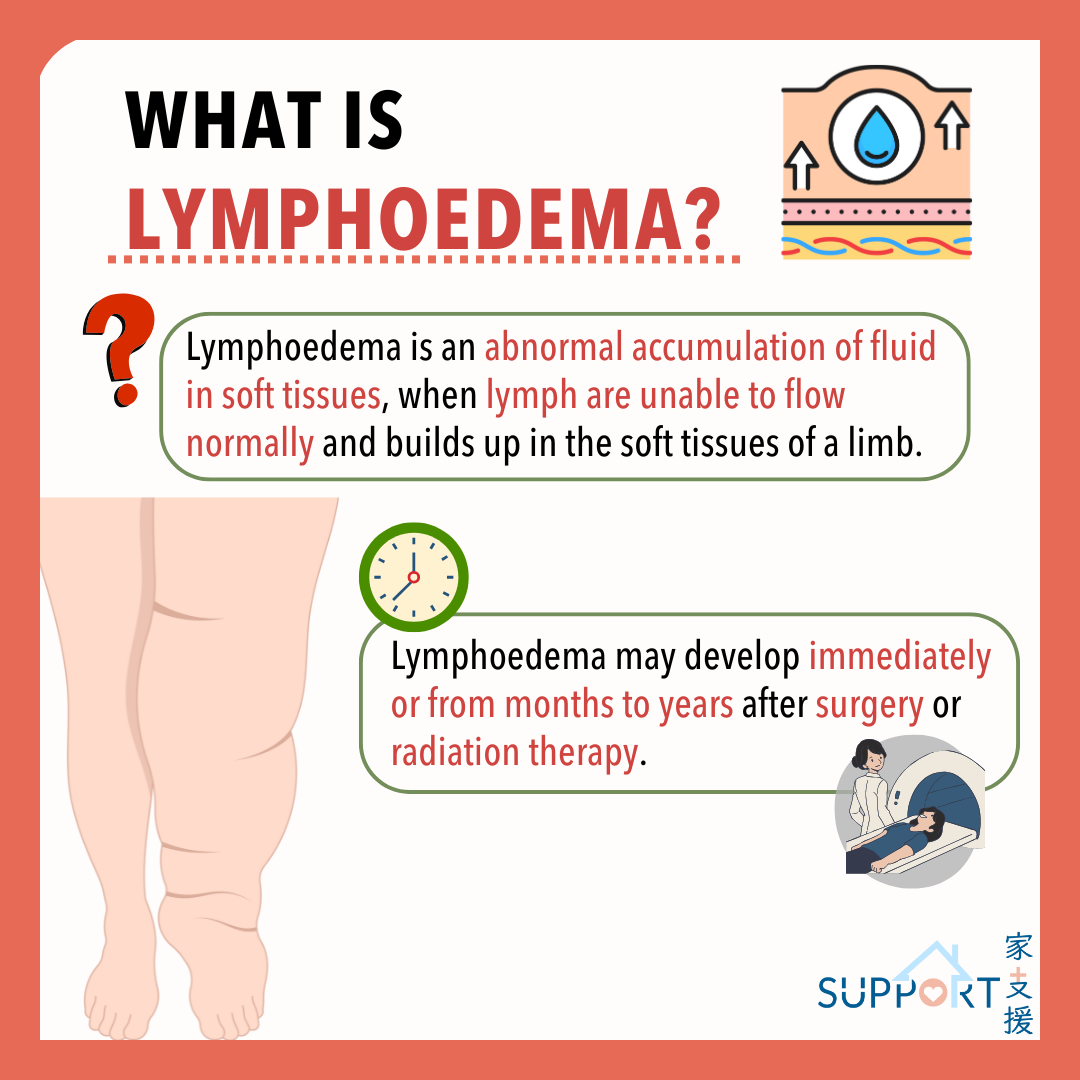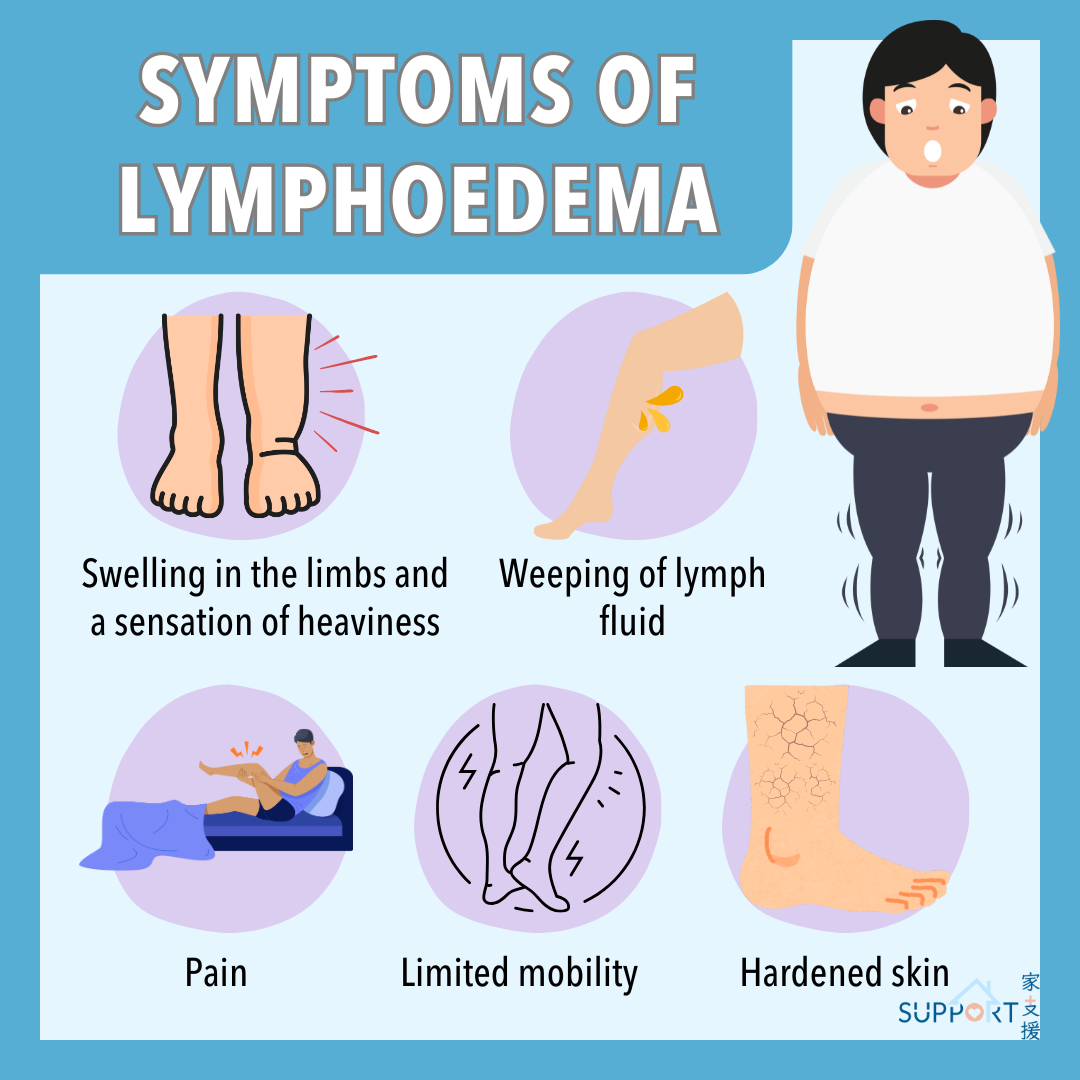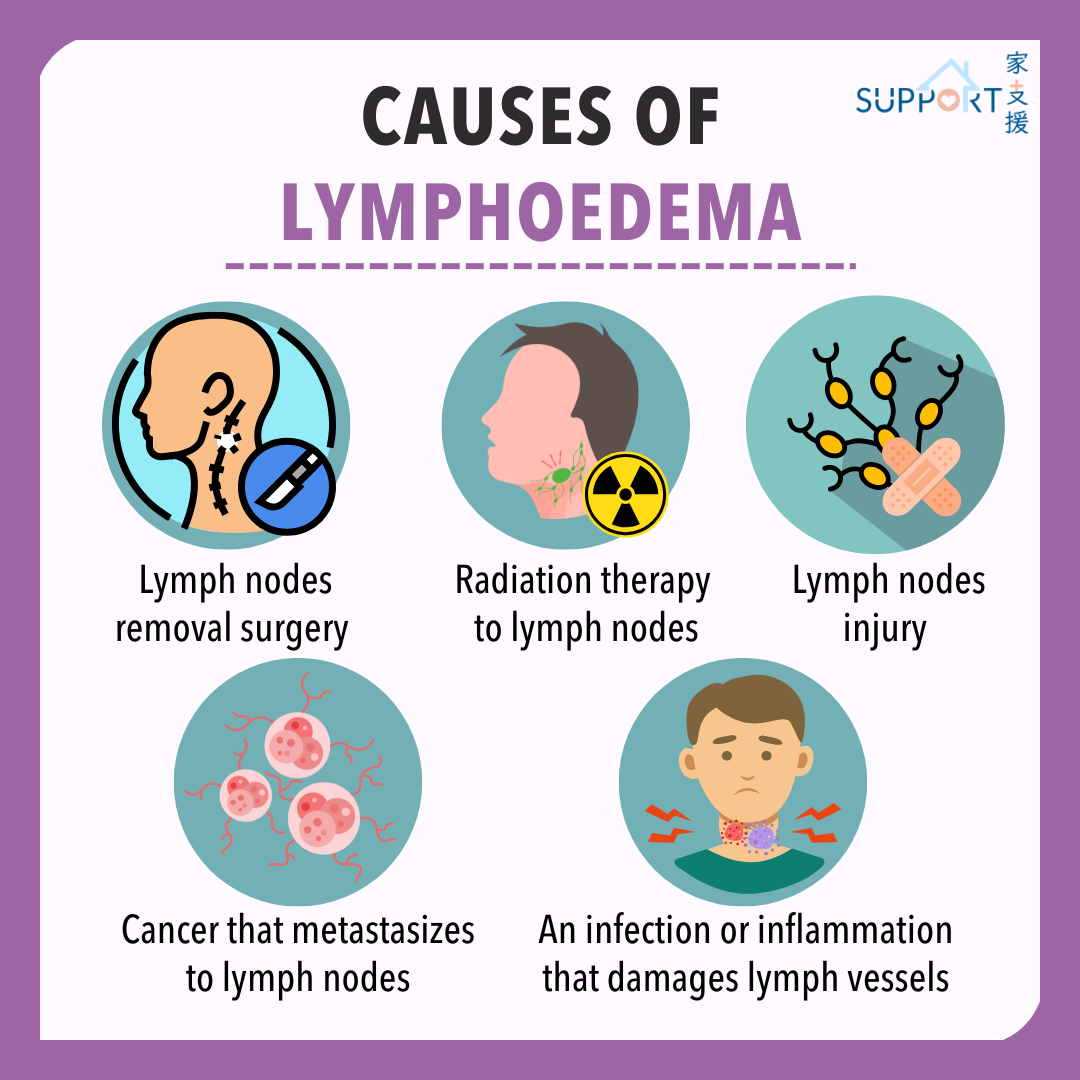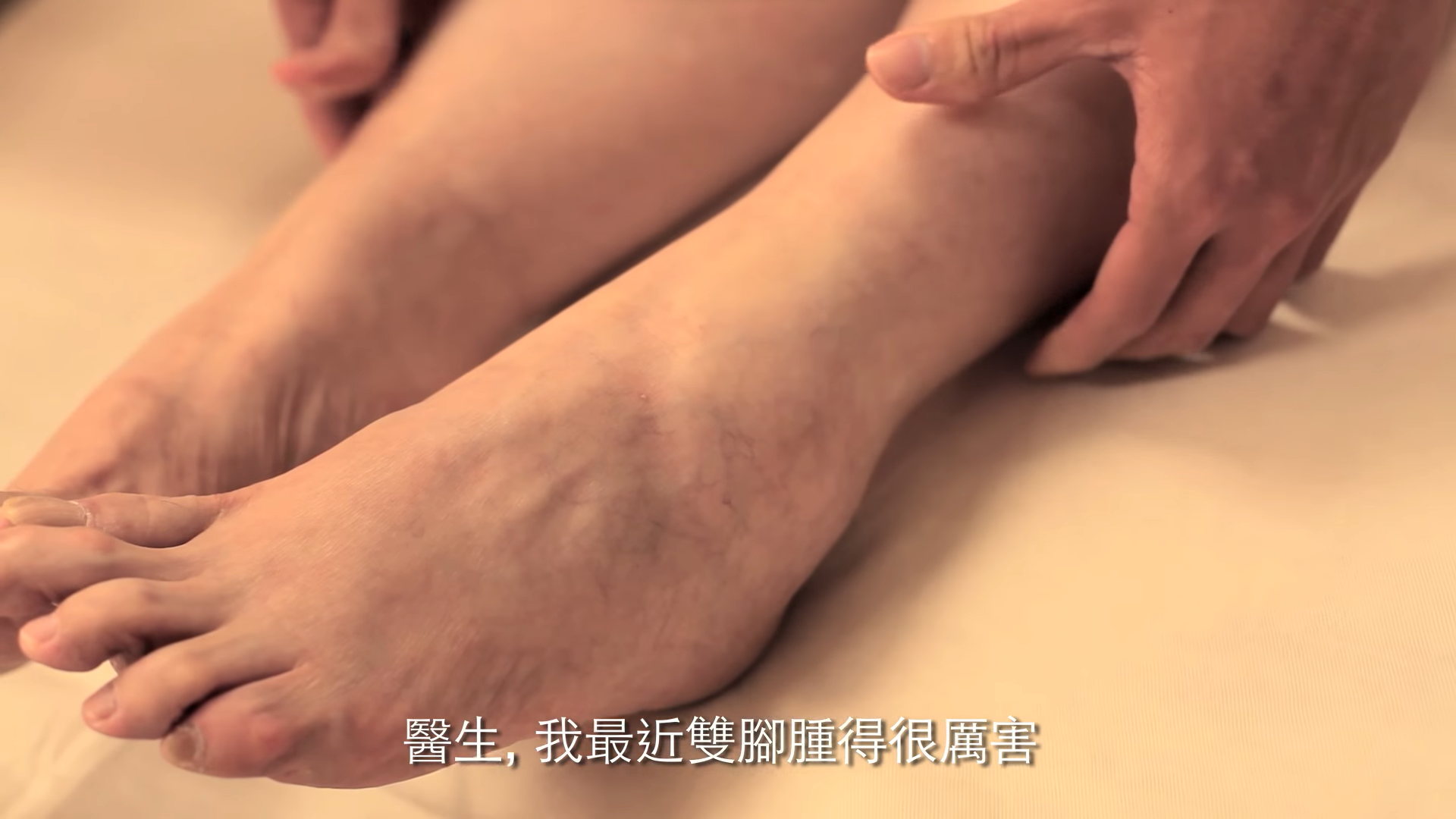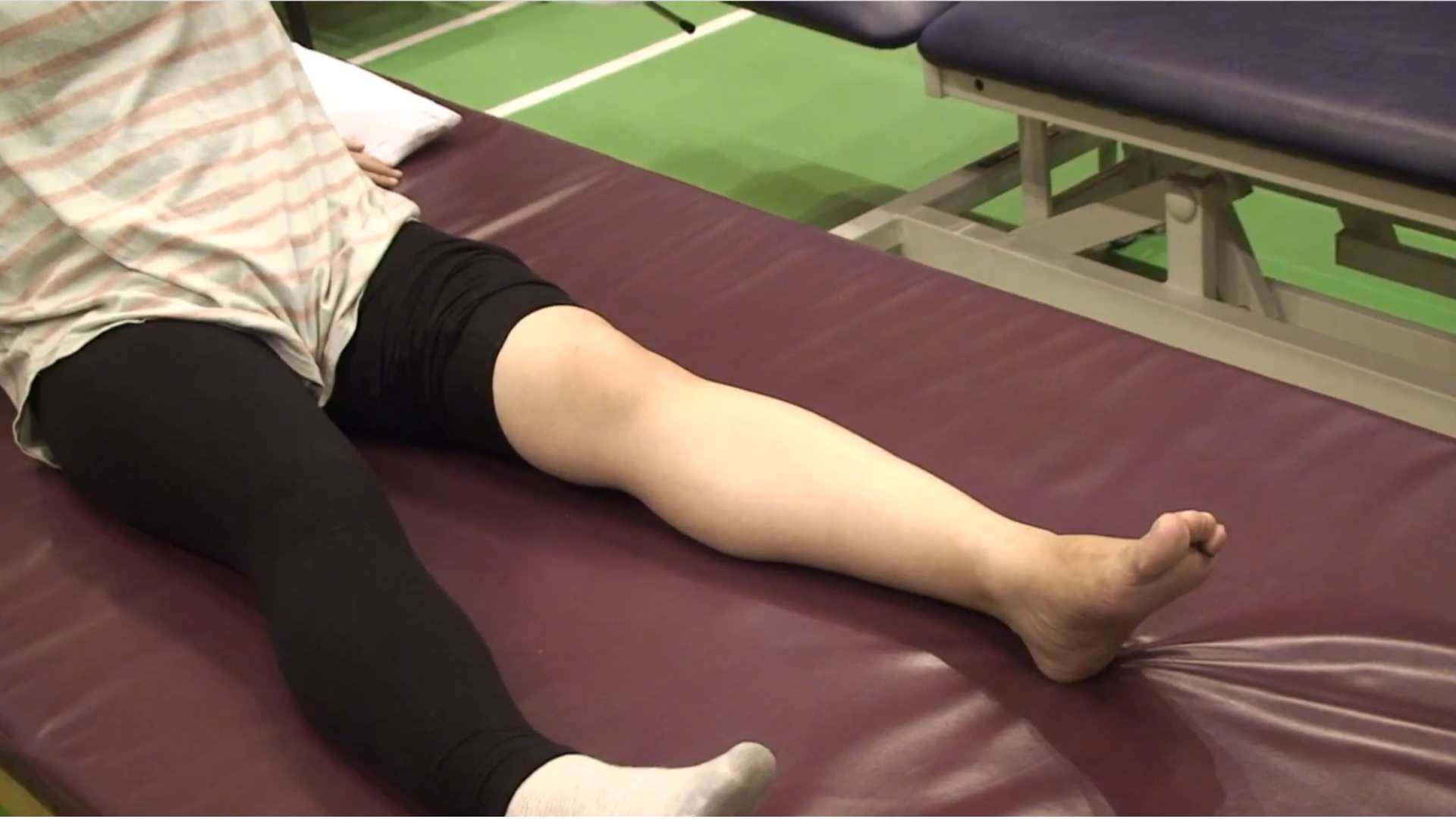
Management of lymphoedema should aim at:
- Reducing swelling
- Relieving pain
- Stabilising the condition
- Preventing an infection
- Improve movements of the arm or leg
Ways to improve lymphoedema include:
Skin care
- Prevent infection
- Keep your skin clean and moisturised, such as applying body lotion.
- Maintain hygiene of the skin by bathing regularly. Test the water temperature, as limbs with lymphoedema may not feel temperature well.
- Avoid feeling extremely hot or cold objects such as heating pads or cold packs, as heat can worsen lymphoedema. Check with the healthcare team before using saunas, steam baths or hot tubs.
- Keep fingers dry and clean
- Wear gloves when working to avoid skin damage
- Clean and disinfect all minor wounds, even scratches or mosquito sites, carefully.
- Use appropriate tools to trim nails, and use an electric razor to avoid cutting the skin with the blade.
- Wear sunscreen to avoid sunburns, especially to the affected limbs.
- Avoid injection, drawing blood or measuring blood pressure in the swollen areas.
- Avoid standing for a long time or sitting with crossed legs
- Use warm water for cleaning or showering
Compression garments/ Bandage
- If necessary, healthcare professionals will recommend the use of pressure garments to reduce lymphoedema or prevent it from worsening.
- Occupational therapists will design and fabricate bespoke pressure garments for patients, according to the affected areas of the body and extent of swelling. Pressure padding will be adjusted according to level of swelling and for scar management as indicated.
- They should be worn round the clock (except during shower) or accordingly to instructions from the therapist.
- One should use pressure garments with care:
- Change them every day
- Handwash with mild detergent/washing powder in cold water and rinse properly; do not forcefully rub or wring them
- Refrain from using hot water or bleach; do not expose them to prolonged sunlight or iron dry
- If discomforts such as itchiness or numbness are caused after wearing pressure garments, stop using it and notify the therapist for a follow-up as soon as possible.
Elevation of limbs
- Keeping the affected limbs raised helps to reduce swelling and encourage fluid drainage through the lymphatic system.
- Positioning of upper limbs: Rest the affected limbs flat on a pillow or on the table
- Positioning of lower limbs: Rest them flat on a chair
Exercise
- Stretching exercises help loosen the tissues in certain areas or move lymph out.
- Gentle exercise helps lymph circulate and reduces swelling.
- Wear compression stockings or bandages reduce swelling.
Manual lymph drainage (MLD)/ massage
- MLD involves gentle skin massages. It helps blocked lymphatic fluid drain properly into the bloodstream and may reduce swelling.
Compression device
- Compression devices are pumps connected to a sleeve that wraps around the arm or leg. The device pumps air into the sleeve and the pumping action will help moving fluid through the lymph vessels and veins and reduce swelling.
Surgery
- For patients who are fit and with long survival time, surgery is an option to reduce swelling permanently.
- Lymphovenous bypass: A new type of surgery that involves attaching lymphatic vessels to nearby veins so that the fluid can drain to the venous system.
- Lymph node graft: Surgery that involves moving the lymph nodes to the area where lymph nodes have been removed.
Positioning limbs properly
- Positioning of upper limbs: Rest the affected limbs flat on a pillow or on table-top
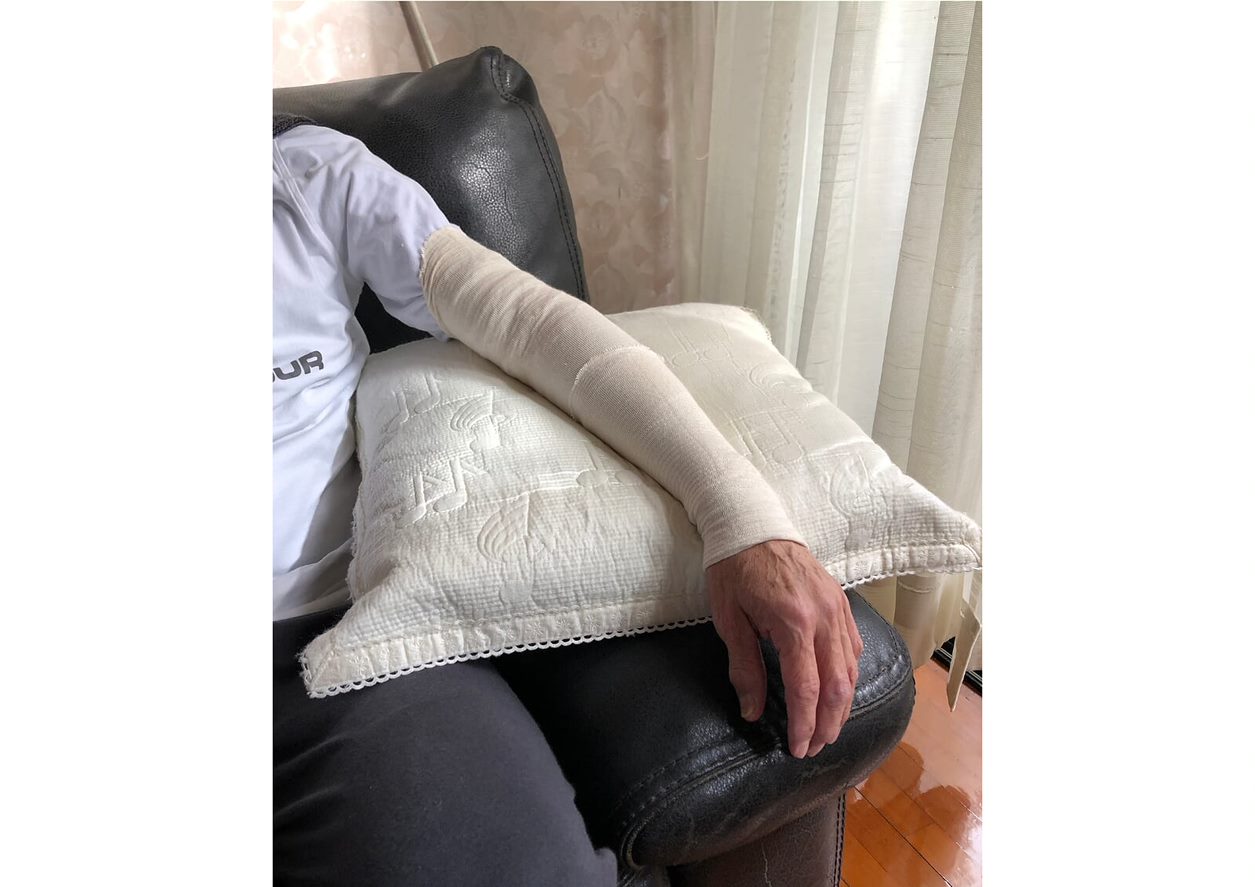
- Positioning of lower limbs: Rest them flat on a chair
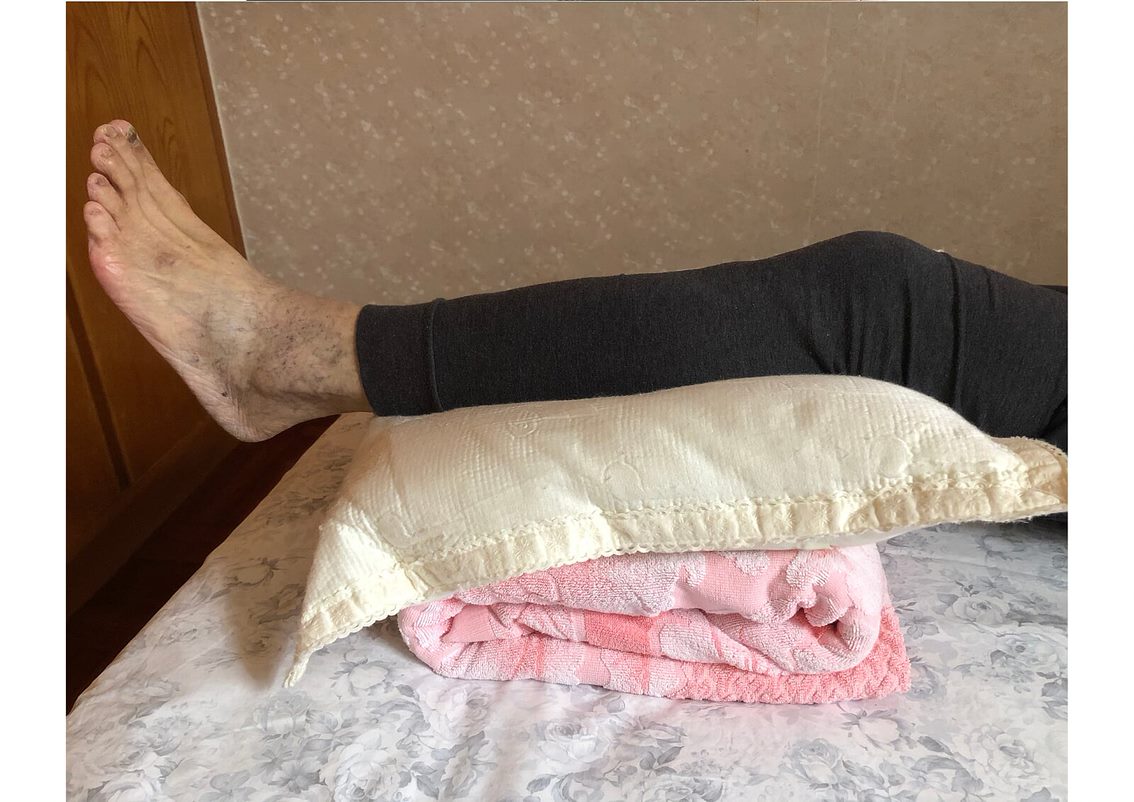
Compression gloves and socks
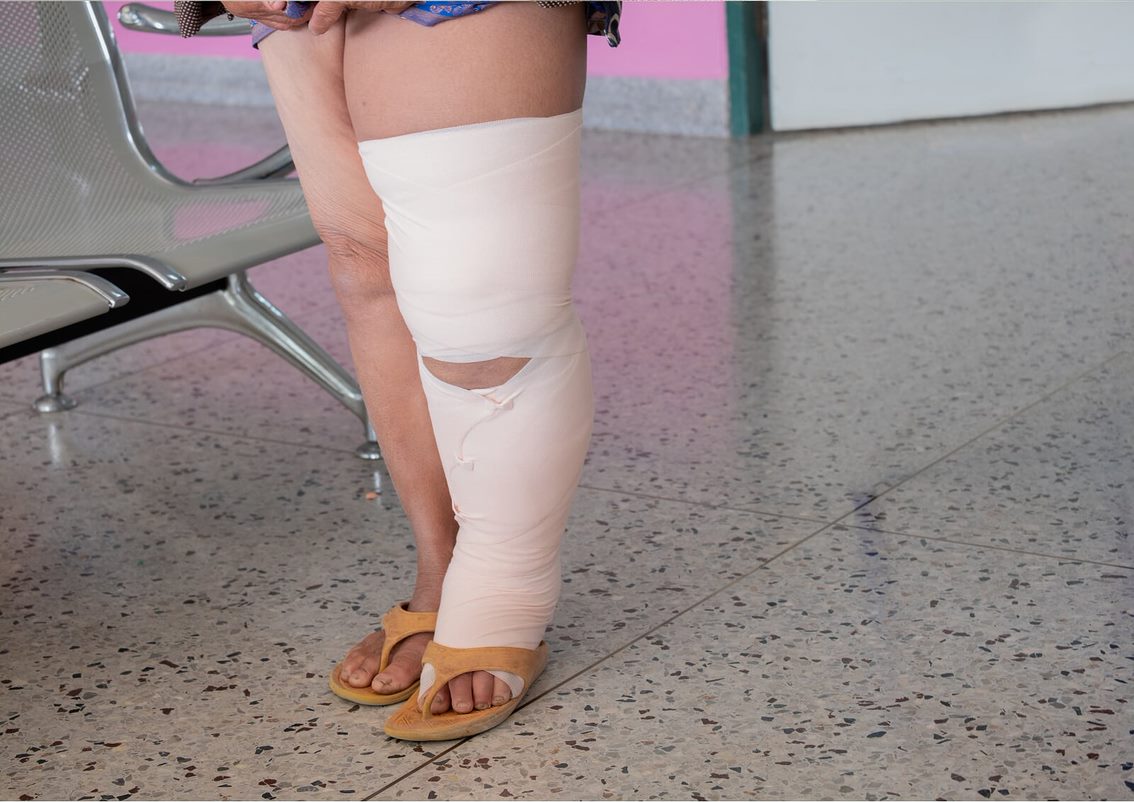

*If discomforts, such as itchiness or numbness, are caused after wearing pressure garments, stop using it and notify the therapist for a follow-up as soon as possible.


